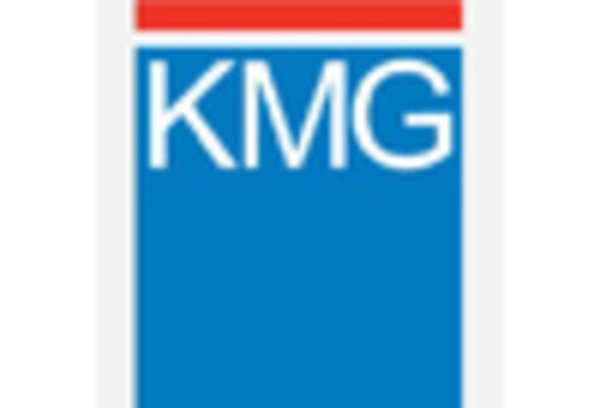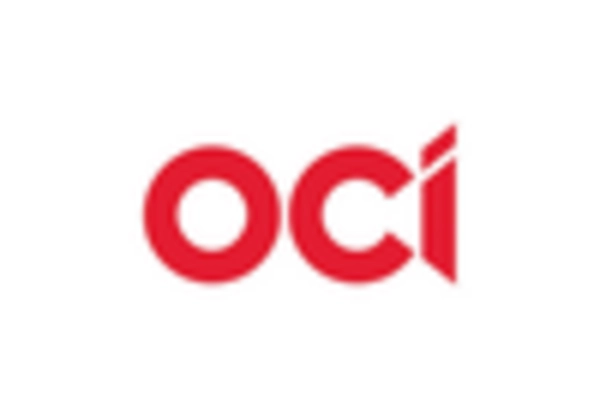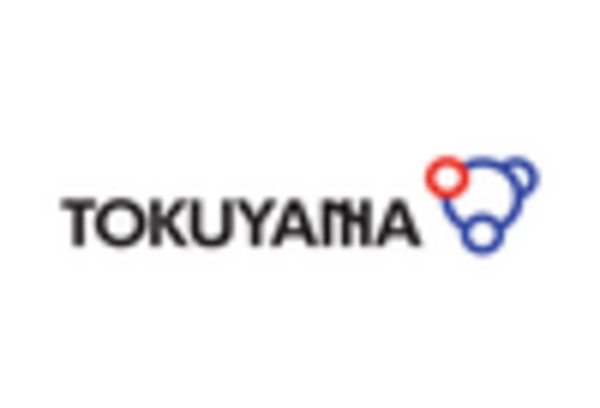Growth in Chemical Manufacturing
The Silicon Tetrachloride Market is also influenced by the growth in chemical manufacturing, particularly in the production of silicones and silanes. Silicon tetrachloride is a key raw material in the synthesis of these compounds, which are widely used in various applications, including adhesives, sealants, and coatings. The chemical industry is projected to expand, with estimates suggesting a growth rate of around 4% annually. This expansion is likely to create additional demand for silicon tetrachloride as manufacturers seek to enhance their product offerings. Moreover, the versatility of silicones in applications ranging from construction to automotive is expected to further drive the silicon tetrachloride market, as companies look to capitalize on the growing chemical sector.
Increasing Demand for Solar Panels
The Silicon Tetrachloride Market is experiencing a notable surge in demand due to the increasing adoption of solar energy solutions. Silicon tetrachloride serves as a precursor in the production of high-purity silicon, which is essential for manufacturing solar cells. As countries strive to meet renewable energy targets, the solar panel market is projected to grow significantly, with estimates suggesting a compound annual growth rate of over 20% in the coming years. This growth directly influences the silicon tetrachloride market, as manufacturers seek to secure high-quality silicon for efficient solar cell production. Furthermore, the push for sustainable energy sources is likely to bolster investments in solar technology, thereby enhancing the overall demand for silicon tetrachloride in the industry.
Expansion of Semiconductor Manufacturing
The Silicon Tetrachloride Market is poised for growth as the semiconductor sector expands. Silicon tetrachloride is utilized in the production of high-purity silicon wafers, which are critical components in semiconductor devices. With the increasing reliance on electronics in various applications, including consumer electronics, automotive, and telecommunications, the demand for semiconductors is expected to rise. Reports indicate that the semiconductor market could reach a valuation of over 500 billion by 2026, which would consequently drive the need for silicon tetrachloride. As manufacturers ramp up production to meet this demand, the silicon tetrachloride market is likely to benefit from increased consumption and investment in production capabilities.
Rising Applications in Advanced Materials
The Silicon Tetrachloride Market is witnessing a rise in applications within advanced materials, particularly in the development of high-performance composites and coatings. Silicon tetrachloride is integral to the production of silicon-based materials that exhibit superior properties, such as thermal stability and chemical resistance. As industries such as aerospace, automotive, and construction seek to enhance material performance, the demand for silicon tetrachloride is expected to grow. Market analysts suggest that the advanced materials sector could see a growth trajectory of approximately 5% annually, which would positively impact the silicon tetrachloride market. This trend indicates a shift towards more innovative and efficient materials, further solidifying the role of silicon tetrachloride in various applications.
Technological Innovations in Production Processes
The Silicon Tetrachloride Market is benefiting from technological innovations that enhance production efficiency and reduce costs. Advances in manufacturing processes, such as improved purification techniques and more efficient reactors, are enabling producers to generate higher yields of silicon tetrachloride with lower energy consumption. These innovations not only improve the economic viability of silicon tetrachloride production but also align with sustainability goals by minimizing waste and emissions. As the industry adapts to these technological advancements, it is likely to see a more competitive landscape, which could lead to increased market participation and a broader range of applications for silicon tetrachloride.
















Leave a Comment